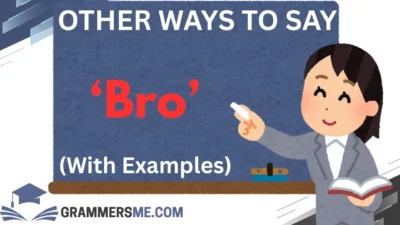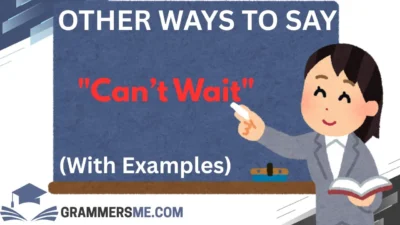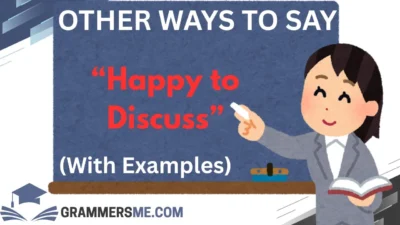Sometimes, a simple “sounds good” just doesn’t quite capture the tone you want. Whether you’re texting a friend, replying to a colleague, or confirming plans with a loved one, choosing the right words can help you express warmth, genuine care, and thoughtful communication. The phrase “sounds good” is fine, but let’s explore more heartfelt and professional ways to say the same thing — because how we say things matters.
As someone who often works in both professional and personal settings, I’ve learned how a small tweak in language can completely shift the tone of a conversation — and make someone feel more seen, heard, and respected.
What Does “Sounds Good” Mean?
“Sounds good” is an informal expression used to agree with or approve a suggestion, idea, or plan. It’s a way of saying, “That works for me,” or “I’m okay with that.” It’s friendly, neutral, and easy to use — but can sometimes come off as too casual or lacking depth depending on the situation.
Is It Professional/Polite to Say “Sounds Good”?
Yes, “sounds good” is generally polite and acceptable in casual and semi-formal contexts. However, in more professional environments or when you want to show extra appreciation or thoughtfulness, you may want to use a more specific or empathetic phrase.
1. That works perfectly
Meaning: Total agreement and satisfaction with the suggestion.
Explanation: This phrase conveys not just acceptance, but enthusiastic approval.
Scenario Example:
“Let’s meet at 2 PM tomorrow.”
“That works perfectly.”
Best Use: When you want to sound cooperative and flexible.
Not Use: If the plan isn’t ideal but you’re just trying to go along.
2. Absolutely!
Meaning: A strong, enthusiastic yes.
Explanation: This is a high-energy, positive response that signals excitement.
Scenario Example:
“Can we push the deadline to Friday?”
“Absolutely!”
Best Use: Friendly or excited confirmation.
Not Use: In overly formal emails.
3. I’m all in
Meaning: Full commitment or agreement.
Explanation: This shows both agreement and personal investment.
Scenario Example:
“We’re planning a surprise for her birthday—are you in?”
“I’m all in!”
Best Use: Collaborative plans, team activities.
Not Use: Formal business meetings or professional emails.
4. That sounds like a plan
Meaning: Agreement with a touch of ease or reassurance.
Explanation: Slightly casual, but shows you’re onboard in a relaxed way.
Scenario Example:
“Let’s tackle this part first, then circle back.”
“That sounds like a plan.”
Best Use: Team discussions, friendly brainstorming.
Not Use: High-stakes or contractual agreements.
5. Works for me
Meaning: A laid-back way to agree.
Explanation: Easygoing, neutral confirmation.
Scenario Example:
“I’ll call you at 4?”
“Works for me.”
Best Use: Informal chats, day-to-day coordination.
Not Use: If you want to sound very professional or thoughtful.
6. I’m good with that
Meaning: Comfortable agreement.
Explanation: You’re not just going along — you’re genuinely okay with it.
Scenario Example:
“Let’s grab lunch at that café you like.”
“I’m good with that.”
Best Use: Personal conversations, small decisions.
Not Use: Business negotiations.
7. Let’s do it
Meaning: Eager agreement or approval to proceed.
Explanation: It adds momentum and positivity to a plan.
Scenario Example:
“Want to take the 9 AM train instead?”
“Let’s do it.”
Best Use: Motivational settings, casual decision-making.
Not Use: In very formal or email-based replies.
8. Fine by me
Meaning: Willingness to go along with something.
Explanation: Neutral tone — works when you’re okay with a plan but not necessarily excited.
Scenario Example:
“Can we skip today’s check-in?”
“Fine by me.”
Best Use: Low-stakes choices.
Not Use: When enthusiasm or energy is expected.
9. Sure thing
Meaning: Friendly, informal yes.
Explanation: A quick way to say yes that still feels light and warm.
Scenario Example:
“Can you send that report today?”
“Sure thing.”
Best Use: Friendly team conversations.
Not Use: When more formal confirmation is needed.
10. You got it
Meaning: Affirmative and helpful response.
Explanation: Signals that you’re not just agreeing — you’re happy to assist.
Scenario Example:
“Mind reviewing this later today?”
“You got it.”
Best Use: Team dynamics, helpful gestures.
Not Use: In highly professional environments.
11. Consider it done
Meaning: A confident way to say you’ll take care of something.
Explanation: This phrase expresses assurance and responsibility, making it great for work or team collaborations.
Scenario Example:
“Can you handle the presentation slides?”
“Consider it done.”
Best Use: When confirming an action you’ll take.
Not Use: If you’re unsure you can complete the task.
12. I’m on board
Meaning: Full agreement and readiness to participate.
Explanation: This phrase conveys commitment and a willingness to move forward.
Scenario Example:
“We’re launching the new project next week. Are you in?”
“I’m on board!”
Best Use: Group projects, business discussions.
Not Use: Casual, everyday situations where less formality is needed.
13. Sounds like a winner
Meaning: Approving something as a great idea.
Explanation: This phrase adds enthusiasm and support for the suggestion.
Scenario Example:
“What do you think about having the event at the beach?”
“Sounds like a winner!”
Best Use: When expressing excitement for a plan.
Not Use: Formal business settings.
14. All set
Meaning: Everything is ready or confirmed.
Explanation: A simple, efficient way to signal approval or preparedness.
Scenario Example:
“Let’s meet at noon?”
“All set!”
Best Use: Short, quick confirmations.
Not Use: When you want to express enthusiasm or extra warmth.
15. No problem at all
Meaning: A polite and reassuring way to agree.
Explanation: This phrase also conveys that you’re happy to comply.
Scenario Example:
“Would you mind picking up the report?”
“No problem at all.”
Best Use: Customer service, polite exchanges.
Not Use: If you need a more enthusiastic reply.
16. Happy to
Meaning: A warm and kind way to express willingness.
Explanation: This phrase makes your response sound friendly and open.
Scenario Example:
“Could you send me those files?”
“Happy to!”
Best Use: Work, helpful responses, professional settings.
Not Use: When you want to sound neutral or serious.
17. That’ll work
Meaning: Agreement with a practical solution.
Explanation: Slightly casual but still affirmative.
Scenario Example:
“Can we meet at 3 instead of 2?”
“That’ll work.”
Best Use: Scheduling, flexible decision-making.
Not Use: If you need a more enthusiastic response.
18. I’m with you
Meaning: Agreement with a sense of unity and support.
Explanation: This phrase works well in team discussions or when showing alignment.
Scenario Example:
“I think we should move forward with this strategy.”
“I’m with you.”
Best Use: Collaboration, expressing agreement with an idea.
Not Use: Simple, routine confirmations.
19. Cool with me
Meaning: Casual way to say you’re okay with something.
Explanation: Works well in relaxed, informal conversations.
Scenario Example:
“Let’s order sushi for dinner?”
“Cool with me!”
Best Use: Friends, casual chat.
Not Use: Professional settings.
20. Sounds okay to me
Meaning: Neutral approval with low enthusiasm.
Explanation: A polite but mild way to agree.
Scenario Example:
“We can start the meeting at 11 if that works.”
“Sounds okay to me.”
Best Use: When you’re fine with an idea but not strongly invested.
Not Use: When a more engaged or excited response is needed.
21. I’m down
Meaning: Informal way to say you’re in.
Explanation: Slangy and fun, it’s great for friendly chats.
Scenario Example:
“Game night at my place?”
“I’m down!”
Best Use: Casual, friendly agreements.
Not Use: Workplace or formal settings.
22. Let’s make it happen
Meaning: Agreement with an enthusiastic and action-oriented tone.
Explanation: This phrase is great when you want to express motivation and team spirit while confirming a plan.
Scenario Example:
“We need to finalize the project proposal by Friday.”
“Let’s make it happen!”
Best Use: Group projects, leadership settings.
Not Use: When responding to small, everyday decisions.
23. I like that idea
Meaning: Agreement while adding personal approval.
Explanation: Instead of just saying “yes,” this phrase shows you genuinely support the suggestion.
Scenario Example:
“What if we add a customer feedback section to the website?”
“I like that idea!”
Best Use: Work settings, brainstorming sessions.
Not Use: When a simple confirmation is needed.
24. Totally
Meaning: A casual, enthusiastic way to express agreement.
Explanation: This phrase is easygoing and friendly, making it perfect for casual chats.
Scenario Example:
“Let’s grab coffee tomorrow?”
“Totally!”
Best Use: Conversations with friends, relaxed settings.
Not Use: Formal business emails.
25. Count me in
Meaning: Agreement while expressing enthusiasm to participate.
Explanation: This phrase works well when someone is organizing something, and you want to be included.
Scenario Example:
“We’re volunteering at the shelter this weekend. Want to join?”
“Count me in!”
Best Use: Group activities, teamwork.
Not Use: Business meetings, formal settings.
26. It’s a go
Meaning: Confirms that something is approved and ready.
Explanation: This phrase feels a little decisive and confident, making it useful for finalizing plans.
Scenario Example:
“Are we launching the campaign today?”
“It’s a go!”
Best Use: Decision-making, project approvals.
Not Use: Casual social plans with friends.
27. That makes sense
Meaning: Shows agreement while acknowledging logic and reasoning.
Explanation: Instead of just confirming a plan, this phrase expresses that you understand and approve.
Scenario Example:
“We should adjust our strategy to focus more on customer retention.”
“That makes sense.”
Best Use: Discussions where critical thinking is needed.
Not Use: When a more casual or quick response is appropriate.
28. OK by me
Meaning: Neutral way to show agreement without strong feelings.
Explanation: This phrase works well when you’re okay with something but don’t have strong preferences.
Scenario Example:
“Let’s go with the blue theme for the design.”
“OK by me.”
Best Use: Situations where you’re flexible and open.
Not Use: When enthusiasm or leadership is expected.
29. Looks good from here
Meaning: Agreement with an approval-based tone.
Explanation: This phrase is great for reviewing and confirming work, plans, or visuals.
Scenario Example:
“Do you approve of the final draft?”
“Looks good from here!”
Best Use: Reviewing documents, design approvals.
Not Use: If a deeper review is needed before confirming.
30. That’s fine with me
Meaning: Neutral, nonchalant agreement.
Explanation: This phrase is polite and non-confrontational, showing you’re okay with the decision.
Scenario Example:
“Can we switch the meeting to 10 AM?”
“That’s fine with me.”
Best Use: Everyday confirmations.
Not Use: When enthusiasm or a stronger opinion is needed.
Conclusion
There you have it! 30 thoughtful alternatives to “sounds good” that can add warmth, professionalism, or enthusiasm to your conversations. Whether you’re agreeing with a friend, confirming a work plan, or responding in a professional email, using the right phrase helps set the right tone.
I’ve personally found that small shifts in language build stronger connections. When you take the time to tailor your responses, you show attention, care, and engagement—which people truly appreciate!
FAQs
1. What’s the best alternative for professional emails?
Try “That works perfectly” or “I’m on board” for a polished tone.
2. What’s the most casual way to agree?
“Totally” or “Cool with me” are great for informal conversations.
3. How do I sound more enthusiastic when agreeing?
Use phrases like “Let’s make it happen” or “Count me in!”
4. Can I use “sounds good” in formal writing?
It’s best to replace it with “That works for me” or “I approve.”
5. How do I confirm something while also showing support?
Phrases like “I like that idea” or “That makes sense” add extra engagement and positivity.




